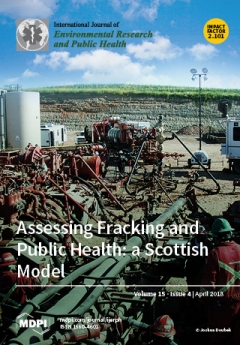While air pollution has been associated with health complications, its effect on sepsis risk is unknown. We examined the association between fine particulate matter (PM
2.5) air pollution and risk of sepsis hospitalization. We analyzed data from the 30,239 community-dwelling adults in
[...] Read more.
While air pollution has been associated with health complications, its effect on sepsis risk is unknown. We examined the association between fine particulate matter (PM
2.5) air pollution and risk of sepsis hospitalization. We analyzed data from the 30,239 community-dwelling adults in the Reasons for Geographic and Racial Differences in Stroke (REGARDS) cohort linked with satellite-derived measures of PM
2.5 data. We defined sepsis as a hospital admission for a serious infection with ≥2 systemic inflammatory response (SIRS) criteria. We performed incidence density sampling to match sepsis cases with 4 controls by age (±5 years), sex, and race. For each matched group we calculated mean daily PM
2.5 exposures for short-term (30-day) and long-term (one-year) periods preceding the sepsis event. We used conditional logistic regression to evaluate the association between PM
2.5 exposure and sepsis, adjusting for education, income, region, temperature, urbanicity, tobacco and alcohol use, and medical conditions. We matched 1386 sepsis cases with 5544 non-sepsis controls. Mean 30-day PM
2.5 exposure levels (Cases 12.44 vs. Controls 12.34 µg/m
3;
p = 0.28) and mean one-year PM
2.5 exposure levels (Cases 12.53 vs. Controls 12.50 µg/m
3;
p = 0.66) were similar between cases and controls. In adjusted models, there were no associations between 30-day PM
2.5 exposure levels and sepsis (4th vs. 1st quartiles OR: 1.06, 95% CI: 0.85–1.32). Similarly, there were no associations between one-year PM
2.5 exposure levels and sepsis risk (4th vs. 1st quartiles OR: 0.96, 95% CI: 0.78–1.18). In the REGARDS cohort, PM
2.5 air pollution exposure was not associated with risk of sepsis.
Full article





